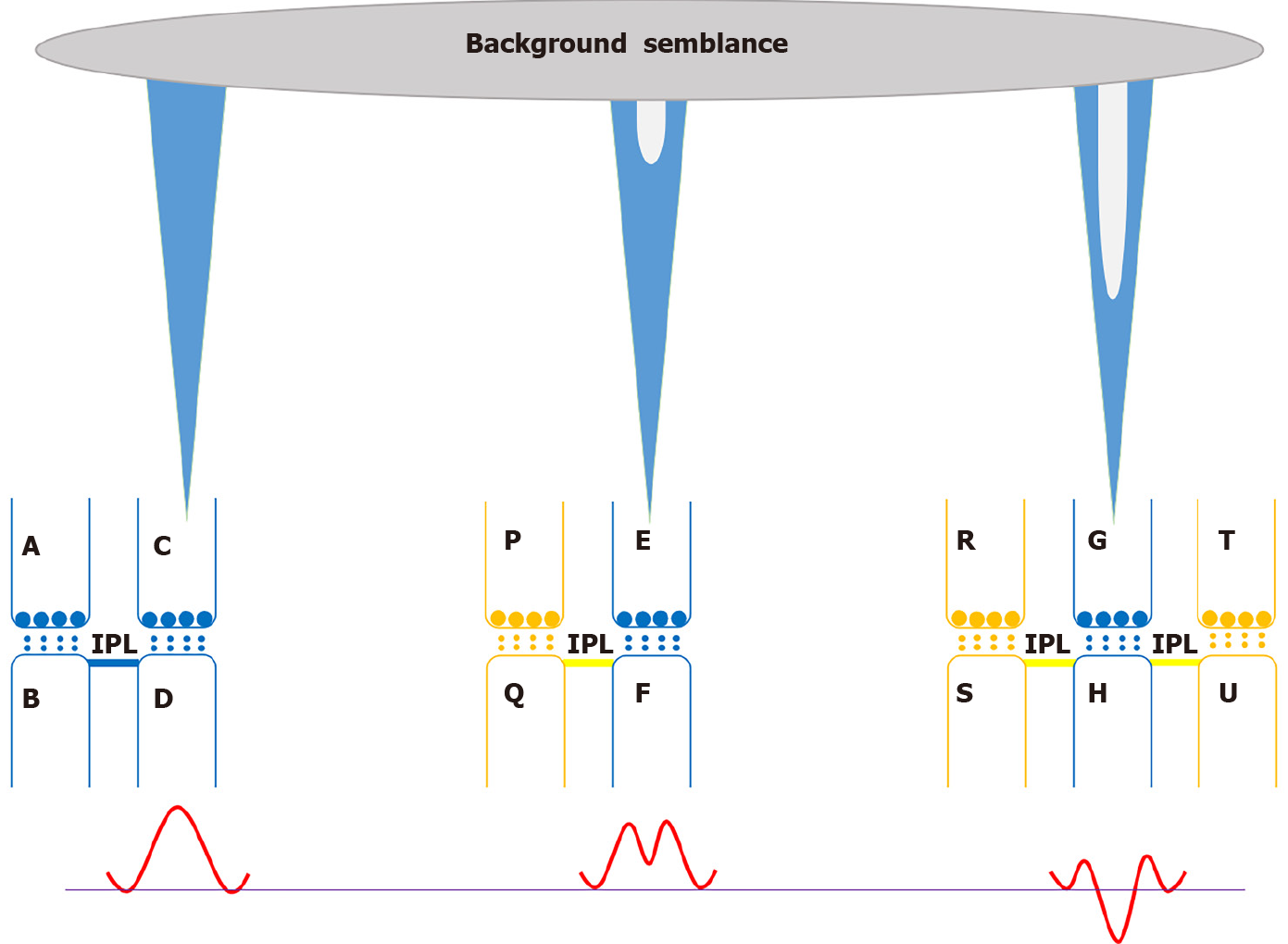Copyright
©The Author(s) 2021.
World J Psychiatr. Oct 19, 2021; 11(10): 681-695
Published online Oct 19, 2021. doi: 10.5498/wjp.v11.i10.681
Published online Oct 19, 2021. doi: 10.5498/wjp.v11.i10.681
Figure 4 A schematic representation of units of internal sensations whose integral generates pleasure in a background net semblance of the system.
Left: Normal semblance as shown in Figure 1. Inter-postsynaptic functional LINK (IPL) between spines B and D that receive excitatory inputs (in blue). An action potential arriving at presynaptic terminal A from a stimulus depolarizes its postsynaptic terminal B, which in turn propagates through the IPL B-D and depolarizes (shown as a positive waveform) inter-LINKed spine D. This generates units of internal sensations (shown as a blue triangle projected upwards from presynaptic terminal C that denotes semblance). Middle: Reactivation of an IPL between spine Q of a medium spiny neuron (MSN) that synapse with an inhibitory input (in orange) and another spine F of a MSN that synapse with an excitatory input (in blue) results in spread of hyperpolarization from spine Q to spine F. This leads to changes in both the waveform of spine depolarization (red waveform) and conformation of semblance (shown as a dip in the blue triangle). Right: Here, spine H that synapses with an excitatory input (in blue) forms IPLs with spines S and U that synapse with inhibitory inputs (orange). Net effect of hyperpolarization results in profound changes in both waveform of spine depolarization (red waveform) and conformation of semblance (shown as a deep dip in the blue triangle). Net effect of changes in semblances from all the inter-LINKed spines of MSNs in nucleus accumbens (NAc) is expected to generate a special semblance of pleasure.
- Citation: Vadakkan KI. Framework for internal sensation of pleasure using constraints from disparate findings in nucleus accumbens. World J Psychiatr 2021; 11(10): 681-695
- URL: https://www.wjgnet.com/2220-3206/full/v11/i10/681.htm
- DOI: https://dx.doi.org/10.5498/wjp.v11.i10.681









